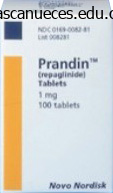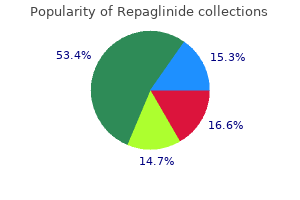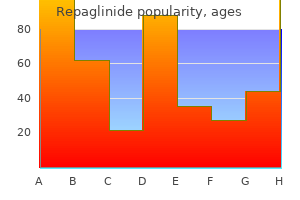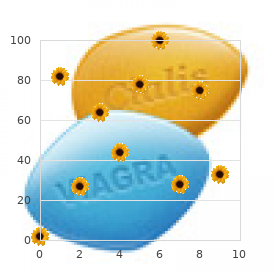Repaglinide dosages: 2 mg, 1 mg, 0.5 mg
Repaglinide packs: 30 pills, 60 pills, 90 pills, 120 pills, 180 pills, 270 pills, 360 pills

Buy 2 mg repaglinide with mastercard
Principles of deglutition: a multidisciplinary text for swallowing and its disorders. The Toxic Patient with Sore Throat and/or Painful Neck Patrick J Bradley 20 Chapter Overview 20. The infection is usually spreading along the fascial planes and areas of the top and neck area. Despite widespread use of antibiotics, deep neck infections remain relatively frequent. Deep neck infections are diseases of nice clinical significance due to their potential serious life-threatening complications, similar to descending mediastinitis, pericarditis, airway obstruction, pneumonia, Chapter 20: the Toxic Patient with Sore Throat and/or Painful Neck pleural effusion, jugular vein thrombosis, septic shock, erosion of the carotid artery leading to massive bleeding, or disseminated intravascular coagulopathy (Bakir, et al. Infections of the deep neck areas present a difficult problem for the next reasons: � the anatomy of the neck areas is complex making precise localization of infections tough. When comparing the symptoms of a mediastinitis group of patients with those diagnosed with deep neck an infection, the next symptoms were considerably extra frequent in the mediastinitis group; dysphagia (93% and 73%), dyspnea (27% and 4. On the other hand, edema was frequently seen in deep neck infection group than within the mediastinal group (95% and 80%). Descending mediastinitis represents a rare, but very critical life-threatening complication of deep neck an infection, with a frequency of about 3% in most research (Celakovovski, et al. Tests together with the following may be useful in the workup-blood chemistry, blood depend and differential, clotting profile, blood cultures, and abscess cultures with Gram staining. Radiological imaging delineates the exact extent of deep neck an infection, identifies their possible sources, detects issues and monitor deep neck area infection progression (Maroldi, et al. Extensive surgery may be averted if nonabscess inflammatory modifications are differentiated confidently from abscess. Imaging-assisted abscess drainage could also be a much less invasive option to surgery (Hegde, Mohan and Lim, 2012). A comprehensive head and 216 Section 1: Head and Neck imaging scans give glorious soft tissue decision to localize the area of involvement. Head and neck most cancers manifesting neck an infection: the incidence of head and neck cancers in sufferers with an initial presentation of deep neck infections is unclear and may be underestimated. It has been suggested that metastatic neck lots which are cystic may become contaminated and present as an abscess, similar to main nasopharynx, oropharynx, and thyroid. Incision and drainage is the mainstay of treatment for most sufferers with neck abscess. It leaves an open wound that might be often cleaned and inspected, and heals by secondary intention. Performing this in the presence of a metastatic abscess may result within the tumor being seeded into the gentle tissues of the neck and skin as loculations are damaged down. Surgery might alter normal lymphatics and vascular drainage, and additional encourage the dissemination of carcinoma cells. It is really helpful that in patients at excessive risk of head and neck squamous cell carcinoma, similar to people who smoke and heavy alcohol drinkers, and older sufferers >40 years, should be endoscoped early and a possible major tumor website be excluded. Should the open neck wound show proof of delayed healing then a biopsy of the margin and/or base of the abscess cavity should be undertaken early. Subsequent administration of the neck metastasis ought to endure an prolonged radical neck dissection taking a large ellipse of surrounding incision pores and skin adopted by postoperative radiotherapy (Lin, et al. Etiology: Currently the overwhelming majority of deep neck space infections, as recognized, is trigger or associated with tonsillar infection in children, whereas odontogenic origin is the most typical trigger in adults (Celakovovski, et al. Demographics: the imply age value of patients with deep neck an infection and mediastinitis group had been 38 and 58 years. The imply time between the beginning of the primary signs and hospital admission was comparable in sales space groups-5. The lateral neck radiograph when performed could demonstrate gentle tissue swelling of the prevertebral area, radiopaque international our bodies, subcutaneous air, air fluid ranges, and erosion of vertebral our bodies. Chest radiography to evaluate the mediastinum and verify for subcutaneous air or pneumomediastinum, displacement of the air strip, or concurrent pneumonia suggests aspiration. The importance of scanning has highlighted that the only real usage of clinical examination alone underestimates the extent of deep neck infections in almost 75% of sufferers (Crespo, Chone and Fonseca, 2004). Magnetic resonance Chapter 20: the Toxic Patient with Sore Throat and/or Painful Neck Table 20.
Cheap repaglinide 1 mg overnight delivery
While no trial has demonstrated a survival benefit, publish hoc analyses have advised potential profit in patients with direct lung harm. This statement was further evaluated in a pediatric trial that included immunocompromised patients. Importantly, the risk-adjusted analysis that accounted for the uneven randomization of immunocompromised patients eliminated the statistically important mortality profit attributed to surfactant administration. Interpretation of the surfactant literature is difficult by the reality that the precise surfactant preparation, the dosing regimen, and the mechanical ventilation technique vary across studies, and each of these components can modify affected person outcomes. Modifying Alveolar Fluid Clearance Preclinical investigations suggest that -agonists might affect alveolar ion and fluid transport and will inhibit proinflammatory cytokine launch, coagulation, and neutrophil activation. Substantial apply variation exists concerning timing, quantity, and composition of enteral feeding. Such dietary manipulations end in favorable short-term enhancements in relevant physiologic parameters, however a bigger randomized trial ended early due to worsened outcomes (ventilator-free days) in the intervention group. Immaturity of the respiratory control methods in infants and younger youngsters predisposes them to apnea and hypoventilation. The components that predispose to ventilatory muscle fatigue embody hypoxia, hypercapnia, acidosis, malnutrition, hyperinflation, adjustments in pulmonary mechanics that enhance work of breathing, and disuse. The infant diaphragm has considerably less fatigueresistant muscle fibers and is weaker than in older youngsters and adults. In adults, this limit for diaphragmatic work is ~40% of maximal diaphragm strength and 60%�70% of mixed inspiratory muscle strength. If the work of respiration associated with a respiratory illness stays under the fatigue threshold, the child continues to breathe spontaneously and acute respiratory failure might not happen. The analysis is usually made when a patient is unable to wean from assisted air flow for 1 month without superimposed acute respiratory illness. Reduce the Respiratory Load Reducing the respiratory load involves optimizing pulmonary mechanics. Aggressive chest physiotherapy, inhaled bronchodilators, and antiinflammatory agents reduce atelectasis and airway resistance by enhancing mucociliary exercise and clearing secretions. Increase Ventilatory Muscle Power Hypoxia, hypercapnia, and acidosis lower muscle vitality manufacturing and predispose the muscle to fatigue. Hyperinflation places the diaphragm at a mechanical drawback so that the same muscle tension develops much less stress. Pharmacologic neuromuscular blockade, sedation, and pain drugs lower respiratory muscle function and should be weaned as tolerated. Weaning from the ventilator should be 284 designed to enhance ventilatory muscle energy to increase the fatigue threshold (an strategy similar to athletic coaching of skeletal muscles). The affected person is then faraway from the ventilator for short intervals of time during wakefulness, two to four times per day. If the child develops signs of distress such as tachypnea, retractions, diaphoresis, tachycardia, hypoxia, or hypercapnia, the dash should be stopped. Usually a baby is weaned off the ventilator completely throughout wakefulness, earlier than making an attempt to reduce sleeping ventilatory support. Improve Central Respiratory Drive Chronic metabolic alkalosis decreases central respiratory drive. Thus, electrolyte steadiness should preserve serum chloride concentrations >95 mEq/dL and avoid alkalosis. Chronic hypoxia or hypercapnia may cause habituation of chemoreceptors, leading to a lower in respiratory heart stimulation, and decreased central respiratory drive. This method to reduce load, increase power, and improve drive in children with prolonged respiratory failure could lead to successful weaning from assisted air flow (Table 27. Ventilatory Muscle Weakness and Neuromuscular Diseases Ventilatory muscle weak point has necessary physiologic consequences. Expiratory muscle weakness prevents efficient coughing and results in decreased elimination of pulmonary secretions and international materials from the lungs.

Buy repaglinide 1mg overnight delivery
Anthracycline-induced Cardiomyopathy Anthracycline myocardial damage mechanisms embrace free radical technology leading to cardiocyte mitochondrial injury. Clinical cardiotoxicity can be acute or of late onset and requires echocardiographic monitoring throughout all phases of care. Current pediatric chemotherapy protocols restrict anthracycline publicity to a cumulative dose (<300 mg/m2). They current with a low serum calcium/ionized calcium, elevated parathormone, and low vitamin D. A medical definition is the presentation of new-onset heart failure with ventricular dysfunction with constructive markers of inflammation, with or without optimistic virology in a previously well baby, and with no structural heart disease. Etiology Myocarditis could also be caused by a number of infective and noninfective brokers (see Table 50. It is attributed to eosinophilic syndromes, allergic reactions, autoimmune diseases, parasitic infections, and postvaccination. Patients current with congestive heart failure, ventricular arrhythmias, coronary heart block, or myocardial infarction and have a attribute endomyocardial biopsy. Patients present with congestive cardiac failure, ventricular arrhythmias, or heart block and have an endomyocardial biopsy with large cells and energetic inflammation. Despite institution of medical remedy, patients continue to have poorly controlled heart failure and arrhythmias which will reply to aggressive immunosuppressive remedy. This may be an underestimation due to the dearth of a biopsy or unknown subclinical circumstances. Pathogenesis and Histology the pathogenesis involves direct invasion by the cardiotropic virus, native irritation, and activation of the humoral and cell-mediated innate immune responses. Acute myocarditis lasts up to four days with viremia, myocyte necrosis, macrophage activation, and release of cytokines. Subacute myocarditis is the following phase with proliferation of infiltrating mononuclear cells, cytotoxic T and B lymphocytes, and pure killer cells and lasts between four and 14 days with clearing of the virus. On histology, an intense inflammatory response is seen with significant lymphocytic infiltration and myocyte necrosis. Acute (nonfulminant) myocarditis has an extended prodrome and presents with a current historical past of a nonspecific viral sickness, related to stomach pain, nausea and vomiting, or coryzal symptoms. Because children are capable of compensate for coronary heart dysfunction, the analysis is frequently not suspected until acute collapse or sudden demise happens. Fulminant myocarditis usually recovers with supportive measures (93% survival after 5 years followup), while nonfulminant myocarditis, which has less intense irritation but the virus persists in a more indolent form, has solely 45% survival without transplant up to 11 years after biopsy. Chronic myocarditis (from postinfectious immune or systemic autoimmune diseases) manifests as persistent or progressive ventricular dysfunction, arrhythmias, and chronic congestive heart failure. Age-specific Differences in Presentation Newborns and infants current with fever, poor feeding, vomiting, irritability or listlessness, periodic episodes of pallor, episodic cyanosis, tachypnea, or respiratory distress. Older youngsters and adolescents commonly report a viral illness (10�14 days) prior to presentation. Initial symptoms are nonspecific and include lethargy, common malaise, diaphoresis, palpitations, rash, train intolerance, and low-grade fever. Echocardiographic evaluation commonly reveals enlarged ventricular end-systolic and diastolic dimensions, lowered shortening and ejection fractions, and atrioventricular valve regurgitation (especially mitral). Tracheal aspirates have a high yield for viral identification, notably adenovirus. Complications of biopsy embrace perforation, hemothorax, dysrhythmia, and demise and elevated in younger sufferers with myocarditis (particularly those requiring inotropic support). Dobutamine or milrinone infusions are administered via peripheral venous entry and are first-line agents, if blood strain permits. Medications used for induction of anesthesia embody (caveats in parentheses): fentanyl (minimal myocardial melancholy, brief length of action), etomidate (safe hemodynamic profile, danger of adrenocortical suppression, and limited familiarity), ketamine (increases heart rate and blood strain, children with end-stage heart failure could not have the power to mount a sympathetic response, during which case it may possibly depress myocardial contractility), and midazolam (used with caution in a conservative and supplemental method within the arms of skilled anesthetist). Milrinone is renally eradicated, with a variable elimination half-life of half-hour to three hours. Steroids have useful results in myocarditis related to autoimmune disorders, vasculitis, dengue, eosinophilic syndromes, and big cell myocarditis. There is insufficient proof to suggest using -blockers in children with congestive coronary heart failure. Progressive Heart Failure Unresponsive to Conventional Management Heart transplantation stays the final choice for myocarditis and intractable extreme coronary heart failure (failure of typical medical management).

Repaglinide 2 mg sale
Cloxacillin, oxacillin, or nafcillin in combination with aminoglycosides are the first-line brokers. The streptococcal exotoxins possess superantigenic properties and trigger massive T-cell proliferation and cytokine release in the same means as staphylococcal superantigens. Eight % of patients have medical indicators of soft-tissue infection, which may require surgical debridement, fasciotomy, or amputation. Endophthalmitis, myositis, perihepatitis, peritonitis, myocarditis, or overwhelming sepsis can be seen. Creatine kinase elevation may detect deep soft-tissue infections (necrotizing fasciitis). Hypocalcemia, hypoalbuminemia, and elevated liver transaminases are common at admission. Other causes include irradiation, removing of thymus, and administration of biologic brokers. Various immune defects and danger for development of infections are given in Table 72. It is a common an infection however can have devastating effects in the immunocompromised. The organism can be transmitted congenitally or by breast milk, saliva, urine, and blood transfusion. Coinfection occurs with different pathogens, especially gram-negative enteric bacteria, fungal pathogens in transplant recipients, and P. Mononucleosis syndrome may happen in immunocompetent as nicely as immunosuppressed sufferers. The clinical course is subacute and contains fever, malaise, headache, myalgia, belly ache, and loose stools. Investigations could show peripheral lymphocytosis with atypical lymphocytes and mildly elevated liver enzymes. At a sophisticated stage, it may possibly cause blurred imaginative and prescient, decreased visible acuity, visual subject defects, and blindness. Other hepatic manifestations include vanishing bile duct syndrome, cholangitis, and chronic rejection (in liver transplant recipients). Gastrointestinal manifestations embrace esophagitis, gastritis, gastroenteritis, pyloric and small bowel obstruction, duodenitis, colitis, proctitis, pancreatitis, hemorrhage, and acalculous cholecystitis. Management In the immunocompetent host, therapy is indicated solely in severe or life-threatening illness. Combination remedy with ganciclovir and foscarnet is related to longer time to recurrence, compared with monotherapy. In recipients of renal transplant, prophylactic antiviral remedy is really helpful when the donor or recipient is seropositive and antilymphocyte treatment is a part of the immunosuppressive routine and for seronegative recipients of grafts from seropositive donors. Varicella pneumonia is a severe manifestation that can current with fever, cough, dyspnea, chest ache, cyanosis, and hemoptysis. Varicella pneumonia could additionally be difficult by acute respiratory distress syndrome, rhabdomyolysis, acute hepatitis, and disseminated intravascular coagulation. Ocular manifestations include conjunctivitis, keratitis, iridocyclitis, panuveitis, and acute retinal necrosis. Patients in danger for moderate-to-severe varicella should be thought-about candidates for oral remedy with acyclovir or valacyclovir. Those at increased threat embrace folks >12 years of age, those with chronic cutaneous or pulmonary disorders, those receiving long-term salicylate remedy, and those receiving brief, intermittent, or aerosolized programs of corticosteroids. Salicylates ought to be avoided in youngsters with varicella, as they increase the chance of Reye syndrome. Treatment must be initiated as quickly as vesicles are acknowledged to prevent development to disseminated illness. The virus remains latent within the body after primary an infection and reactivates in immunocompromised sufferers. The medical features in immunocompromised kids might end in fever, pores and skin rash, pneumonia, bone marrow suppression, encephalitis, and rejection. The scientific manifestations are sometimes much like sepsis attributable to other organisms. The pores and skin lesions encompass generalized rashes or discrete, agency papules with a nodular heart typically surrounded by an erythematous halo.

Diseases
- Proliferating trichilemmal cyst
- Ballistophobia
- Post-polio syndrome
- Semmerkrot Haraldsson Weenaes syndrome
- Aplasia cutis autosomal recessive
- Hypertonic gingivitus

Purchase repaglinide with paypal
A small proportion, have an aggressive predilection to metastasis to the cervical lymph nodes, and distant spread to the lungs. The average native recurrence price is 35%, and the incidence of metastasis and diseaseassociated death round 15%. Oncocytic Carcinoma Oncocytic carcinoma is unusual, normally impacts men, with a mean age of 65 years. Eighty percent of oncocytic Chapter 14: Mass in the Parotid Gland carcinomas affect the parotid gland. These tumors are thought-about to be high grade and are characterized by a number of native recurrences and regional/distant metastasis. The usual presentation is with a rapid onset of a growing swelling, diffusely infiltrating the salivary gland, associated with ache and facial paralysis. More than one-third of sufferers develop native recurrence and >50% develop distant metastasis to the lungs, lengthy bones, liver, and mind (Wee, Thomas and Bradley, 2012). Other Malignancies Metastatic Skin Cancer Cutaneous squamous cell carcinoma of the pinnacle and neck frequently metastasizes to the parotid area, and quite common in Australasia and Asian continents. Other skin cancers that may metastasize embrace malignant melanoma and Merkel cell carcinomas. Other patients at threat of growing cutaneous squamous cell carcinoma include recipients of organ transplantation, persistent lymphatic leukemia, hairy cell leukemia, and non-Hodgkin lymphoma are being susceptible. Primary lesion at threat of manifesting parotid metastasis embrace: lesion >2 cm in diameter, tumor thickness >4�5 mm, tumor situated on or around the ear, recurrent lesions, poorly differentiated grade, microvascular lymphatics or perineural invasion, superior age, and a cutaneous squamous cell carcinoma in an immunocompromised patient. Patients with medical illness involvement of the parotid gland should endure surgery adopted by postoperative radiotherapy, with preservation of the facial nerve when not involved by tumor. Lymphoma While 20% of parotid gland neoplasms are malignant, among the many malignancies recognized lymphoma of the parotid is rare and is reported to be identified after surgical procedure in 1�4% of parotidectomies. Certain authors propose the following standards for a major lymphoma of the parotid gland: (1) the gland is the first organ affected, (2) the parenchyma of the gland is affected, and (3) the lymphoid infiltrate is clearly malignant. Other authors have included sufferers with preexistent lymphoma elsewhere and intranodal lymphoma of an 162 Section 1: Head and Neck Table 14. P0 P1 P2 P3 N0 N1 N2 No medical illness in the parotid Metastatic node three cm in diameter Metastatic node three cm and 6 cm in diameter, or multiple nodes Metastatic node 6 cm in diameter or disease involving the facial nerve, or skull base No scientific neck illness Single ipsilateral node 3 cm in diameter Single ipsilateral node three cm or multiple nodes or contralateral nodes. These tumors are often solitary and properly encapsulated and have a tendency to splay the nerve of origin. Although roughly 30% of all of those lesions occur within the head and neck, facial nerve schwannomas are rare with <100 cases reported (Alicandri-Ciufelli, et al. The majority of reported facial nerve schwannomas have been reported in the intracranial/intratemporal location, up to 30% (8/29) reported in a single sequence had parotid gland involvement (Caughey, May and Schaitkin, 2004). Although uncommon, and skilled head and neck surgeon could have to deal with an intraparotid facial nerve and the next finest described the scenario which might be encountered: (1) the diagnosis is most often made intraoperatively, and (2) resection may lead to an entire paralysis with its aesthetic penalties. The literature has not considered the position and relationship that the neoplasm can have with the facial nerve, and the prognostic penalties (Alicandri-Ciufelli, et al. Types A and B have an excellent prognosis, compared with types C and D, during which the recovery of facial nerve operate is poor, as a result of the resection and reconstruction procedures of facial nerve, and doubtless due to the broader extent of the neoplasm along the nerve. These malignancies usually have an extranodal and disseminated growth pattern, which the everyday presentation of salivary gland lymphomas at the time of diagnosis. Lymphoma of the parotid gland in all probability originates from an intraglandular lymphatic node, which is often unrecognized on the time of prognosis, and secondarily impacts the parenchyma of the gland leading to an extraglandular pattern of growth (Wyss, et al. Presentation is often as a outcome of a gradual rising parotid mass, and there are neither fixed or particular signs nor medical findings to information the analysis of a lymphoma of the parotid gland (Loggins and Urquhart, 2004). Open surgery is usually necessary to obtain tissue for a definitive histological prognosis. The use of frozen part might help with the cessation of a surgical procedure and must be thought of should the possible prognosis of a lymphoma have been thought of through the preoperative workup (Feinstein, et al. Considering a core biopsy prior to parotid exploration or the excision biopsy of any Chapter 14: Mass within the Parotid Gland where attainable.
Purchase repaglinide 2 mg
In status asthmaticus, these adjustments in airway diameter during expiration cause airflow obstruction, air trapping, and lung hyperinflation. Diaphragmatic flattening from hyperinflation causes additional mechanical disadvantages. Forced expiratory volume and forced vital capability are decreased, and whole lung volumes and functional residual capacity are elevated. Gas-exchange abnormalities in status asthmaticus are because of ventilation�perfusion (V/Q) mismatch, together with increased intrapulmonary shunt (atelectasis) and increased useless space (airway overdistension) from small-airway obstruction. Atelectasis causes areas of decreased air flow but adequate pulmonary blood circulate (shunt) and arterial hypoxemia. As disease severity worsens, larger distal airway obstruction causes alveolar distension and increased pulmonary useless space. Eventually, intercostal and diaphragmatic muscle tissue fatigue and progressive hypoxemia and hypercarbia result. Cardiopulmonary Interactions in Asthma Dynamic hyperinflation in severe bronchial asthma can have significant cardiopulmonary consequences. The fluctuations in pleural pressures produce important effects on the intrathoracic vessels and right atrial venous return. The giant, adverse intrathoracic stress produced during inspiration will increase left ventricular afterload and reduces systolic blood strain. Upper airway obstruction also can present with wheezing however usually presents with stridor. Diagnostic considerations include vocal twine paralysis, anatomic webs, airway hemangiomas, laryngomalacia, tracheomalacia, or bronchomalacia. Congenital anomalies, similar to complete tracheal rings and bronchial slings, may also present with wheezing. Children typically current with respiratory misery, cough, and wheezing that progresses over 1�2 days. The presence of fever suggests decrease respiratory infection, although bronchial asthma and pneumonia can occur collectively. Poor air movement on chest auscultation is an ominous sign of impending respiratory or cardiopulmonary failure. Wheezing, which reflects turbulent airflow in obstructed airways, is usually equal bilaterally. Expiratory wheezing alone is found in mild-to-moderate illness, whereas expiratory plus inspiratory wheezing is current in moderate-to-severe status asthmaticus. The "silent chest" is an ominous signal and will indicate either pneumothorax or severe airway obstruction. For spontaneously respiratory youngsters with standing asthmaticus, medical interventions must be based upon physical examination and not blood gasoline determinations. Lactic acidosis is usually present and reflects a combination of dehydration and overuse of the respiratory musculature. Serum magnesium ranges could also be necessary as a end result of the correction of relative hypomagnesemia in status asthmaticus could improve outcome. Evidencebased clinical pathways are designed to reduce variation and standardize the supply of highquality care. Children are often dehydrated on account of decreased oral intake and increased insensible losses from elevated minute ventilation. Providing acceptable fluid resuscitation is crucial; however, overhydration must be prevented. Pulmonary edema is a danger as a end result of microvascular permeability, increased left ventricular afterload, and alveolar fluid migration associated with the inflammatory lung process. In lung segments with atelectasis, compensatory hypoxic pulmonary vasoconstriction is often current. Treatment with inhaled -agonists may induce generalized pulmonary vasodilatation, exacerbate mismatch, and worsen hypoxemia. Corticosteroids the overriding physiologic derangement in bronchial asthma is airway irritation, and corticosteroids are a mainstay within the administration of both acute and continual bronchial asthma. Glucocorticosteroids suppress cytokine production, granulocyte-macrophage colonystimulating issue production, and inducible nitric oxide synthase activation.
Order repaglinide on line
Moreover, the unpredict in a position trajectory of firearm projectiles via gentle tissue, potential for cavitation or thermal injury, and impairment of crosssectional imaging by retained metallic fragments all imply that prime velocity accidents are much extra likely to require operative exploration than lowvelocity injuries (Hirshberg, et al. Such a classification has traditionally aided the evaluation and administration of neck accidents, and a threezone classifica tion was first devised by Monson and colleagues in 1969 (Monson, Saletta and Freeark, 1969). This figure is described as a 550% improve on incidence figures from the identical region within the 1980s. A key precedence is to decide if any of these very important struc tures have been injured, and subsequently to decide whether or not or not intervention is required to repair them. A targeted historical past and examination can help to confirm the extent of accidents as the presence of certain signs and signs correlate with accidents to particular constructions. These signs and indicators together with their associated injuries are summarized in Table 27. The further evaluation of each area is mentioned in additional element later in this chapter. This emphasized a systematic method to the evaluation and administration of any form of important trauma. Battlefield information have demonstrated that many preventa ble deaths happen as a result of massive hemorrhage which may be controlled with simple pressure (Sarkar, et al. For this cause, army medics and civilian prehospital medical teams at the moment are taught to attend to "C"-massive exsan guinating hemorrhage-before returning to the standard primary survey. The must prioritize the administration of significant hemorrhage is particularly acceptable in the context of penetrating neck trauma, provided that exsanguin ation accounts for 50% of the mortality from such accidents (McConnell and Trunkey, 1994). Practical methods for the preliminary management of large hemorrhage are dis cussed within the later part on vascular injuries. In such instances, tried orotracheal intubation might exacerbate existing airway compromise. A low, vertical incision via pores and skin and subcutaneous tissue is beneficial, with entry into the airway a minimal of one tracheal ring under the site of damage (Bent, Silver and Porubsky, 1993). The ultimate technique of acquiring airway control in penetrating neck trauma is more doubtless to rely upon each patient components and local experience. The heterogeneous nature of accidents noticed in penetrating neck trauma mean that no single technique of airway control is appropri ate for all sufferers, and a variety of techniques could have to be thought-about. In such cases, an immediate priority is to safe and preserve the compromised airway. A number of means of securing the compromised air way have been described in penetrating neck trauma, although little proof exists in the published litera ture on the relative efficacy of the different methods. Five sufferers were unconscious and man aged with simple oral endotracheal intubation, whereas two patients required tracheostomy. Clinicians should be notably vigilant for the potential of a life threatening pneumothorax or hemothorax in the context of a zone I harm, given the proximity of the lung api ces and subclavian vessels. As such, scientific examination of the chest is mandatory in all sufferers with penetrat ing neck trauma, and a chest Xray will also often be required. Immediate needle thoracentesis could also be indi cated if there are signs and signs of a pressure pneu mothorax (tachypnea, tachycardia, hypotension, tracheal deviation, and decreased breath sounds). Circulatory Considerations Whilst the airway is secured and respiratory system assessed, widebore intravenous entry must be obtained and intravenous fluid resuscitation commenced. Blood tests must be sent for a baseline full blood depend, clotting research, crossmatch, and routine biochemistry evaluation. Although preliminary results from a randomized managed trial in people appear to support a lower goal mean arterial strain of fifty mm Hg quite than sixty five mm Hg in the context of hem orrhagic shock following trauma (Morrison, et al. As such, immobilization may worsen somewhat than improve general scientific outcomes from penetrating injury. In one current retrospective review of 199 cases of penetrating neck trauma, cervical spine immobiliza tion was associated with an elevated risk of death (p < zero. Although the application of cervical backbone immobilization may be a marker for extra severe injury and therefore a higher threat of mortality, the authors speculate that immobilizationrelated mortality could presumably be secondary to delayed prehospital transport, obscuration of clinical findings, impaired intubation, and reluctance to take away a cervical collar to deal with lifethreatening inju ries. Exceptions to this guidance embrace a focal neurological deficit at presenta tion, a combined mechanism of harm (blunt and pen etrating) or a excessive index of suspicion for spinal harm in an unconscious or heavily intoxicated affected person. Cervical Spine Immobilization the requirement for cervical spine immobilization within the context of penetrating neck trauma is an space of conten tion. One retrospective research demonstrated that the rate of cervical fracture or cervical spinal twine injury following a stab wound inflicted via assault was exceedingly uncommon, occurring in eleven out of 7,483 sufferers (0. All sufferers with twine damage had an obvi ous neurological deficit on presentation, and no sufferers who were neurologically intact on presentation required surgical stabilization.

Discount 1 mg repaglinide mastercard
In most conditions, endotracheal intubation takes place in aware and spontaneously breathing patients using topical anesthetic methods with gentle sedation and avoiding neuromuscular blocking agents. Reinforced endotracheal tubes of decreased diameter however enough length to lengthen beyond the compression may be essential. Extracorporeal membrane oxygenation or cardiopulmonary bypass back-up must be thought of. Prebiopsy cytoreductive remedy using corticosteroids or radiation could additionally be required in sufferers presenting with severe airway compromise (may cut back the ability to make a definitive diagnosis). Progressive venous congestion and airway compression often cause facial engorgement, headache, plethora, cyanotic facies, cough, dyspnea, orthopnea, hoarseness, stridor, and dysphasia with or without pleural and/or pericardial effusions. Once the definitive analysis is reached, the suitable chemotherapeutic plan will cut back tumor load quickly with improvement of symptoms. Thrombolytic therapy must be considered in patients with extensive thromboembolism if no contraindications. Other infections to be thought of embody invasive fungi (mucormycosis), bacterial necrotizing pneumonias because of Staphylococcus aureus, Pseudomonas aeruginosa, Klebsiella, and tuberculosis. Noninfectious etiologies embody major endobronchial tumors, diffuse alveolar hemorrhage, bronchiectasis, and international our bodies. The halo sign, a dense nodular lesion surrounded by ground glass attenuation (>180�), may be seen. Aggressive remedy of associated coagulopathy, thrombocytopenia, and anemia and appropriate antibiotics or antifungals are warranted. Bronchoscopy should be thought-about if endoluminal management of the bleeding is feasible. Other options embrace bronchial arteriography with transcatheter embolization in nonsurgical candidates, wedge resection of the affected lung phase, or lobectomy. Conditions that enhance the danger of bowel obstruction include surgical procedure, radiation therapy, opioid use, prolonged bed relaxation, malnutrition, and electrolyte abnormalities. Dexamethasone and octreotide are efficient in relieving signs in most sufferers with malignant bowel obstruction. Surgery is indicated for patients with full mechanical obstruction, partial mechanical obstruction not responding to medical therapy, peritonitis, and frank perforation. The "basic triad" of intussusception includes colicky pain, abdominal mass, and bloody stools. Ultrasonography is extra correct than abdominal radiographs and may detect the lead level and other intra-abdominal pathology. The therapy of choice is surgical reduction of the intussusception and resection of the inciting pathology rather than radiologic discount utilizing distinction enema. The most typical etiologies that require emergent analysis include hemorrhage, hemolysis, and splenic sequestration. Anemia, no matter etiology, results in a decreased O2-carrying capability and, when extreme, decreased O2 delivery. Ferritin and serum iron are low, and total iron-binding capability and transferrin are increased. Iron deficiency is commonest in children <3 years and results from insufficient iron consumption throughout a interval of speedy development. In older kids and adults with iron deficiency, occult blood loss ought to be suspected and will prompt a gastrointestinal analysis. Enteral ferrous sulfate is most popular; parenteral administration (with iron dextran) is an choice if compliance or tolerance is a matter. Transfusion is often beneficial for kids with or with out cardiorespiratory signs when Hb is four g/dL. Hemolytic anemia and autoimmune hemolytic anemia can be caused by either intracellular or extracellular issues. Extracorpuscular disorders embrace immunemediated destruction, mechanical fragmentation, infections, medicine, chemicals, and venoms.
References
- Chakravarti A, Bale SJ. Differences in the frequency of X-linked deleterious genes in human populations. Am J Hum Genet 1983;35:1252.
- Khattar H, Goerin R, Fouron JD, et al: Heart tumors in children: Report of three cases with favorable spontaneous courses. Arch Mal Coeur 1975; 68:419-429.
- Babikian VL, Kase CS, Pessin MS, et al. Intracerebral hemorrhage in stroke patients anticoagulated with heparin. Stroke 1989; 20:1500-3.
- David JS, Gueugniaud PY, Riou B, et al., Does the prognosis of cardiac arrest differ in trauma patients? Crit Care Med. 2007;35:2251-2255.
- Flynn A, Moscucci M, Share D, et al. Trends in door-to-balloon time and mortality in patients with ST-elevation myocardial infarction undergoing primary percutaneous coronary intervention. Arch Intern Med 2010;170(20):1842-1849.
- Hendrikx, A.J., Nadorp, S., De Beer, N.A. et al. The use of endoluminal ultrasonography for preventing significant bleeding during endopyelotomy: evaluation of helical computed tomography vs endoluminal ultrasonography for detecting crossing vessels. BJU Int 2006;97:786-789.
- Solomon R, Werner C, Mann D, D'Elia J, Silva P. Effects of saline, mannitol, and furosemide to prevent acute decreases in renal function induced by radiocontrast agents. N Engl J Med. Nov 24 1994;331(21):1416-1420.






